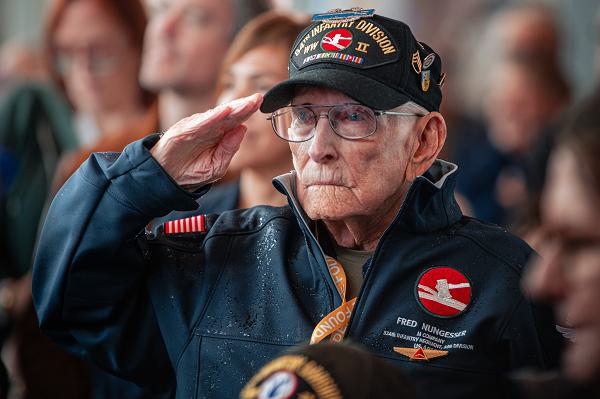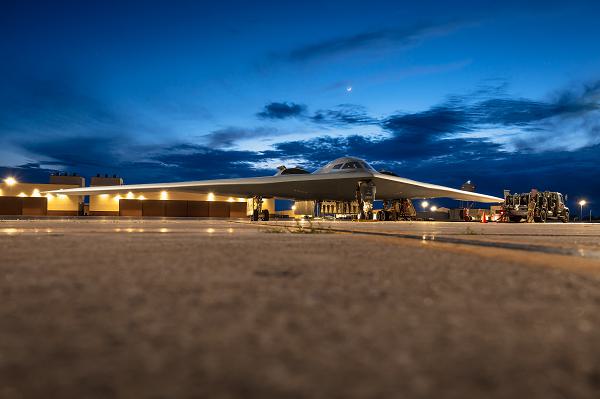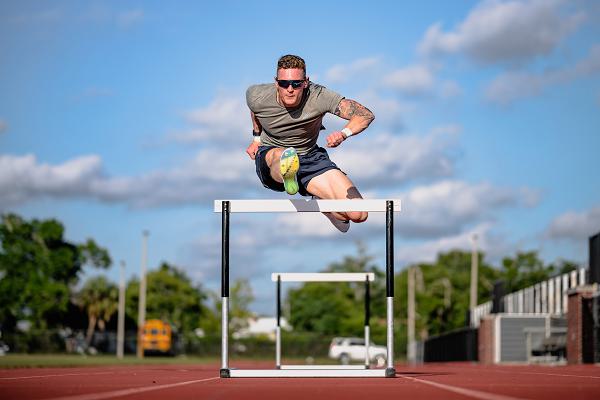- Details
- Hits: 7799

Normandy, France (June 6, 2025): As the world celebrates the 81st anniversary of the D-Day landings, some of the vanishing breed that fought that day are returning to France likely for the last time. In this photo by Staff Sergeant Reece Heck, one of these surviving heroes, Army veteran Fred Nungesser, salutes during a ceremony honoring veterans of the D-Day landings.
Nungesser was a heavy weapons machine gunner assigned to the 84th Infantry Division, operating a .30 caliber water-cooled machine gun. He was born on September 5th, 1925, in Union City, New Jersey and was drafted into the Army in July 1944. He completed Basic Training at Camp Wheeler, Georgia, before shipping out to Le Havre, France in early January 1945.
After the D-Day landings, Nungesser participated in the fighting at the Roer River as the allies crossed into Germany. The 84th Infantry Division continued its advance through Germany, ultimately reaching the Rhine and Elbe Rivers. The division participated in the Battle of the Bulge which lasted five weeks and led to 81,000 American casualties.
- Details
- Hits: 8380

Whiteman Air Force Base, Missouri. (May 28, 2025): It is recommended that every driver shut off their engine when refueling at their local gas station. The Air Force, however, does not follow this sage advice. In this photo by Staff Sergeant Joshua Hastings, Airmen assigned to the 509th Logistics Readiness Squadron conduct hot-pit refueling for a B-2 Spirit bomber. “Hot pit” refueling is the practice of pumping gas into an aircraft immediately after landing while keeping the engines running. While this greatly reduces aircraft turnaround time, it is also an extremely dangerous practice.
First, the benefits of hot pit refueling. In a traditional landing, pilots turn off their engines to refuel and for general maintenance. This process can take up to six hours before an aircraft can return to service. Using hot pit refueling can reduce time on the ground to just 60 minutes, a sixty-six percent savings. The goal is to give U.S. aircraft the ability to get back in the air faster for more sorties and greater combat power.
- Details
- Hits: 7711

Panama City, Florida. (June 13, 2025): America’s armed forces are going for the gold. In this photo by Airman 1st Class Zeeshan Naeem, Second Lieutenant Braeden Holcombe, a 325th Civil Engineer Squadron engineering project programmer, tackles the hurdles while preparing for Olympic qualifying. Holcombe is a member of the World Class Athlete Program (WCAP), a Department of the Air Force initiative that allows active-duty Airmen and Guardians to train and compete at the highest levels of international sports while continuing to serve.
The WCAP is a three-year program to compete in U.S. Armed Forces events, the Conseil International du Sport Militaire (Military World Games), and the Olympic Games. The program was established in 1995 to continue the legacy of Tuskegee Airman Malvin G. Whitfield. Whitfield, a Korean War tail gunner, became the first active-duty American serviceman to win Olympic gold in 1952 in Helsinki. “Marvelous Mal” Whitfield is said to have trained for the ’52 Games by running on and off an airfield between bombing missions.
- Details
- Hits: 5613

Belleau Wood, France. (May 29, 2025): Civilians often wonder why Marines proudly call themselves “Devil Dogs”. In this photo by Corporal Garrett Gillespie, U.S. Marine Corps General Christopher Mahoney, the Assistant Commandant of the Marine Corps, left, and a key French leader, right, drink from Devil Dog Fountain during the 107th anniversary of the battle of Belleau Wood.
This famous battle occurred in June 1918 during the German spring offensive in World War I near the Marne River in France. The Germans, having signed a peace treaty with Russia, launched attacks on the Western Front hoping to defeat the Allies before U.S. forces could arrive. The German leadership hoped the influx of fifty divisions could overwhelm the Allied forces in France before millions of Americans could cross the Atlantic and reinforce France and Britain. They nearly succeeded, reaching to within fifty-nine miles of Paris.
That is when they ran into American Marines.
When the battle began, the French ordered the Marines to fall back and dig trenches further to the rear. Countermanding the order, Marine Captain Lloyd W. Williams of the 2nd Battalion, 5th Marines uttered the now-famous retort "Retreat, hell! We just got here." Instead, he ordered his Marines to "hold where they stand" and to dig shallow fighting positions from which they could shoot from the prone position. The fighting was relentless, much of it at close quarters and involving bayonets, knives, and even fists. The Americans launched six attacks before the Germans were finally expelled from Belleau Wood on June 26.
United States forces suffered 9,777 casualties, included 1,811 killed, while German casualties were estimated to be over 10,000 with 1,600 taken prisoner. After the battle, the French renamed the forest “Bois de la Brigade de Marine” (Wood of the Marine Brigade) in honor of the Marines' tenacity.
An official German report classified the Marines as "vigorous, self-confident, and remarkable marksmen and used the term Teufelshunde (Hell Hounds) to describe their ferocity. To this day, every Marine is proud to be called a “Devil Dog” in honor of their brothers who made such a lasting impression on the enemy.
- Details
- Hits: 2342

Vilseck, Germany. (June 1, 2025): In this photo by Specialist Elijah Magana, Soldiers with the 2nd Cavalry Regiment and their families begin the family color run on the final day of Dragoon Week at U.S. Army Garrison Bavaria. The run is part of a weeklong annual observance celebrating the heritage of the Army’s longest continuously serving cavalry regiment, also known as the Second Dragoons. Dragoon Week includes physical competitions, tactical challenges, and plenty of community engagement.
The 2nd Cavalry Regiment was founded in 1836 and saw their first combat action during the Seminole Indian Wars in Florida. In 1846, the 2nd Cavalry was ambushed by Mexican troops in a battle that was known as the Thornton Affair. The assault against American troops gave then President Polk the justification for invading Mexico. In declaring war, Polk called the attack "American blood shed on American soil.”
- Details
- Hits: 2465

Fort Logan National Cemetery, Colorado. (May 25, 2025): While Arlington National Cemetery is the world’s most famous military burial ground, the majority of veterans are actually buried elsewhere. In this photo by Air Force Technical Sergeant Chance Johnson, Mikeala Plaszcz and her child visit the gravesite of her father at one of fourteen national cemeteries managed by the National Park Service.
The first national cemetery was established during the Civil War in 1861 to accommodate the horrific casualties of that bitter conflict. Troops on both sides were being killed at such a rate that on-site burials were simply not feasible. Initially, a system of twelve national cemeteries was established by an act of Congress in 1862. The act authorized the President to purchase land for the establishment of cemeteries for burial of those fighting on behalf of the United States.


